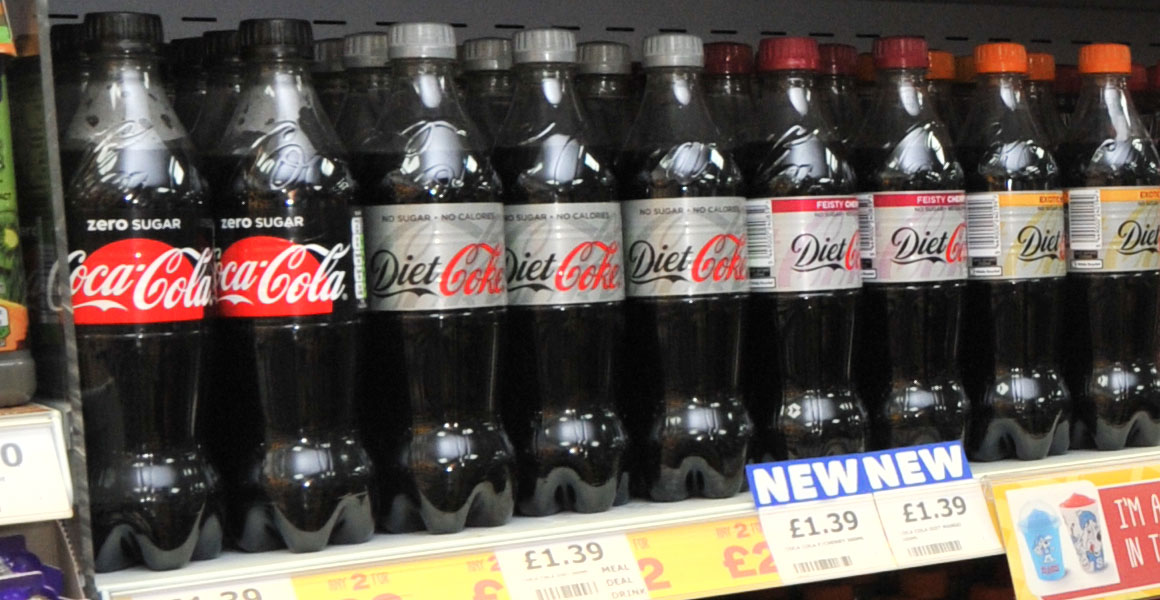Soft drink suppliers are attempting to grab the space left by confectionery suppliers following the implementation of high fat, salt and sugar (HFSS) restrictions next year.
Last week, the government confirmed its plans to ban unhealthy goods from checkouts, shop entrances and aisle ends in most 2,000sq ft+ stores and to ban ‘volume offers’ such as ‘50% extra.’
The law will come into effect in October 2022, five months later than initially planned.
However, leaked documents seen by Better Retailing revealed that even before the plans were confirmed Coca-Cola Europacific Partners (CCEP) was hard at work battling to win a share of the key store spaces set to be vacated by unhealthy lines.
A presentation from the supplier sent to forecourt chains argued aisle-end space currently given to unhealthy confectionery and snack lines should be given over to soft drinks once the confectionery and snack lines are turfed out by the ban.
Small shops escape new ‘junk’ food advert ban
Conversely, in areas in which unhealthy soft drinks lines such as Coca-Cola are set to be turfed out, such as counter chillers and food-to-go ranges near shop entrances, CCEP made the case that soft drinks should maintain the space.
Asked to comment on the document, a CCEP spokesperson said: “The facts are clear. Soft drinks is one of the few categories to have reformulated and innovated at scale. Most other categories have not – or cannot – meet the thresholds for fat, salt and sugar and will be impacted by the regulations.
“Worth £2.4bn in convenience and continuing to grow, our message to retailers is that soft drinks are ready to fill the space on shelves when non-compliant products from other categories are moved.”
At 2,000sq ft, Avtar Sidhu’s St John’s Budgens in Kenilworth will be affected by the legislation. Asked about the leaked CCEP documents, he said while it “makes perfect sense” for supermarkets, dual-siting soft drinks with extra chillers was impractical in convenience.
He also suggested CCEP understated the changes taking place in other categories. “I’ve been speaking to brands about this for a while. These brands are not standing still and take the hit. The soft drinks brands went through the same thing. They didn’t stand still, so the rest of the industry won’t, either,” he said.
Government confirms advertising ban on HFSS products
Convenience analyst and Independent Retail Owners Forum founder, Scott Annan, also suggested a different approach. “CCEP may well argue that sugar-free is healthier but it isn’t a core food. I’ve got nothing against CCEP at all, it has done a good job on many things but we need a reset, we really need to be promoting ‘fresh food for today’ like our Irish friends – that’s what we should have on gondola ends,” he said.
He added: “There is a ceiling on genuine impulse of 20%. You could fill up a whole store’s gondola ends with crisps or Coca-Cola, but people aren’t going to buy any more of the products because there’s a ceiling on sales.”
The store area restrictions apply to stores above 2,000sq ft that either have more than 50 staff or are part of a symbol group or franchise.
ACS data suggests up to 2,366 independent convenience stores may fall in this category.
NFRN national president Stuart Reddish said the inclusion of symbol groups showed “unfairness and inconsistency”.



Comments
This article doesn't have any comments yet, be the first!